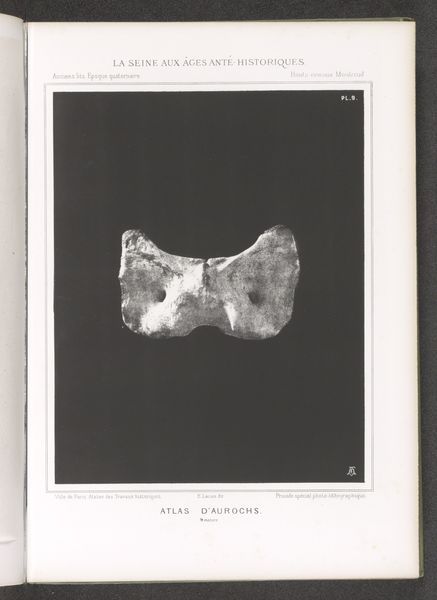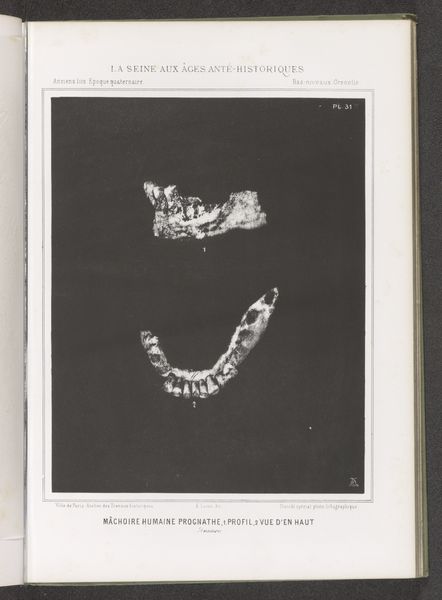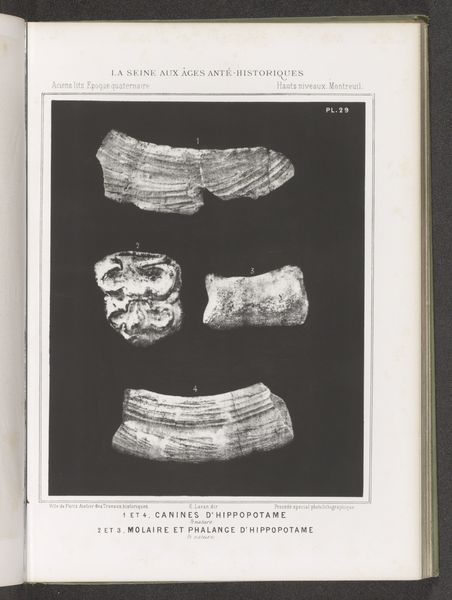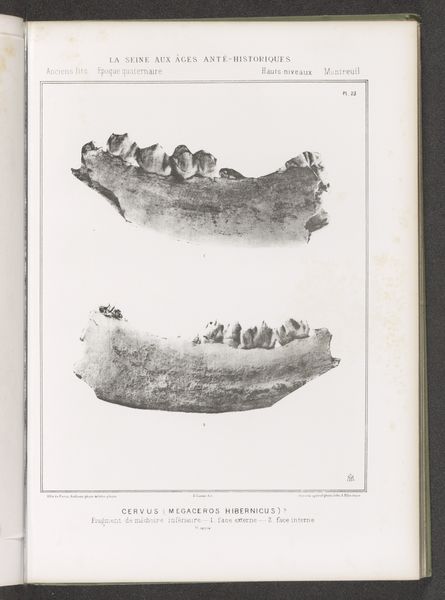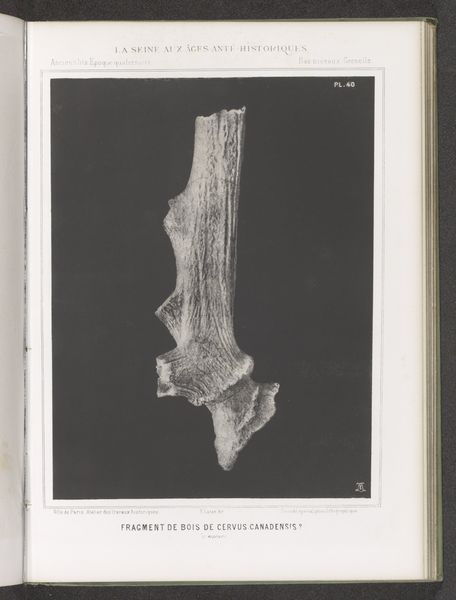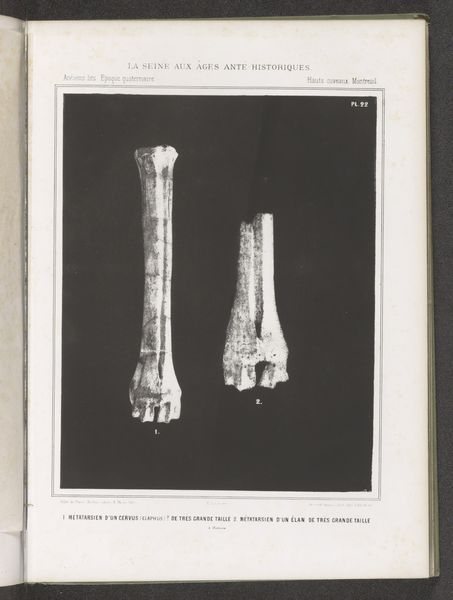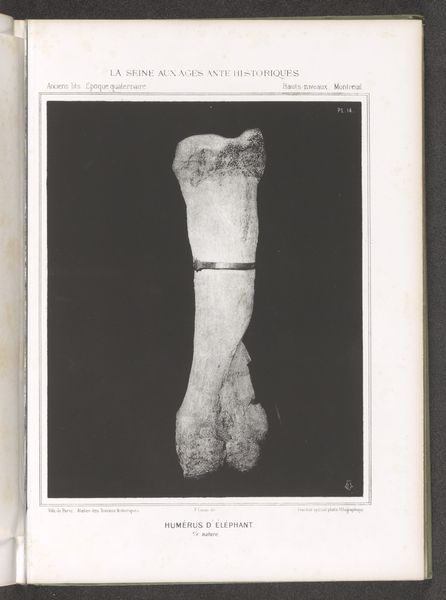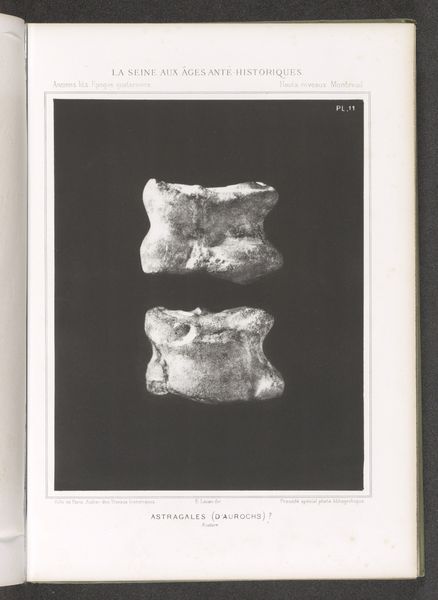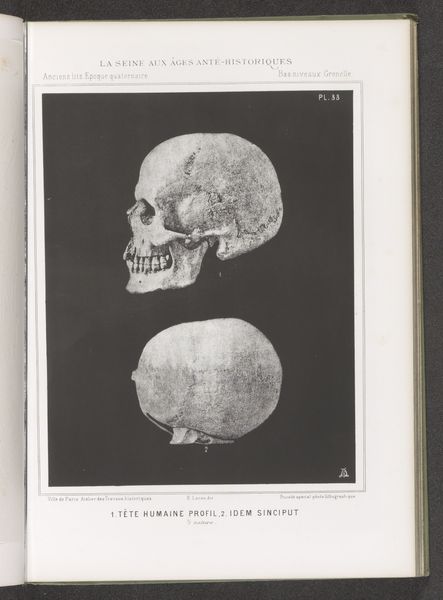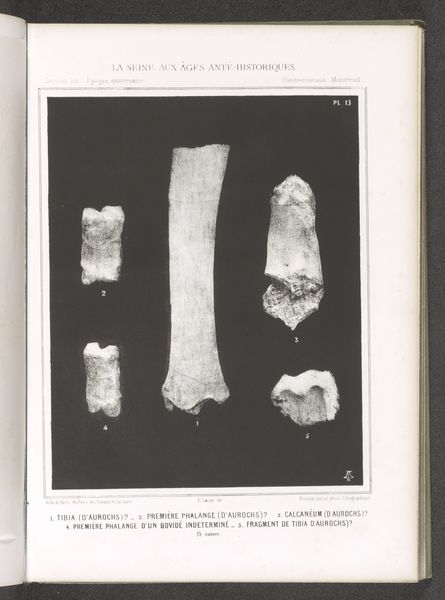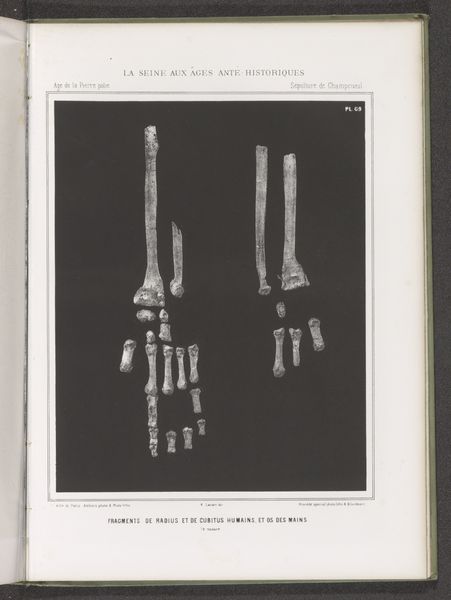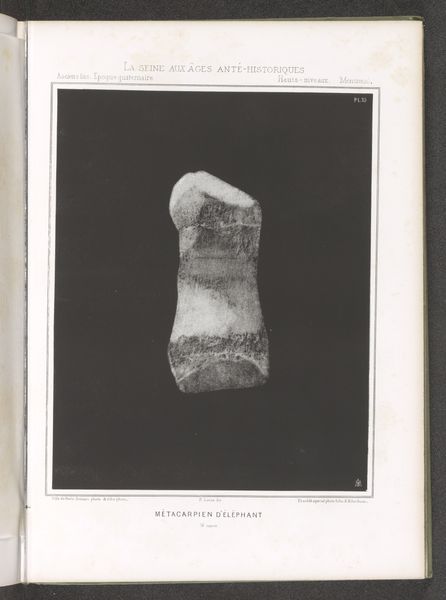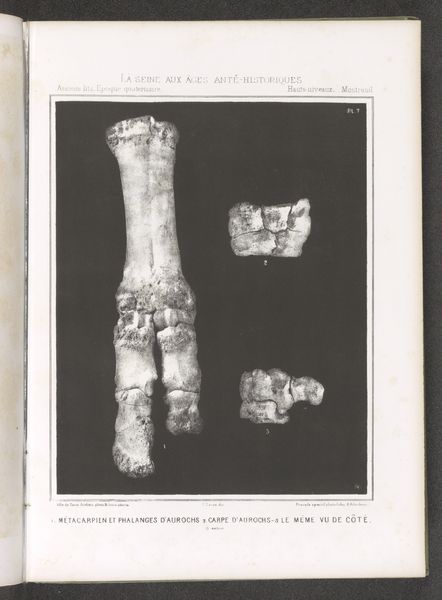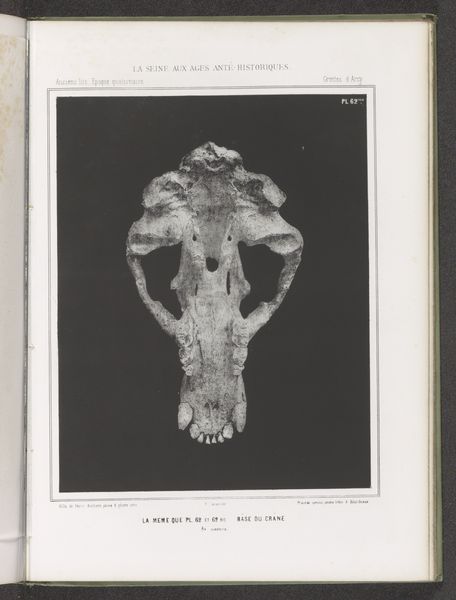
Drie aanzichten van een menselijke kaak, zijaanzicht, vooraanzicht, bovenaanzicht before 1869
0:00
0:00
print, photography, gelatin-silver-print
#
still-life
#
aged paper
#
homemade paper
#
script typography
# print
#
hand drawn type
#
photography
#
hand-drawn typeface
#
stylized text
#
gelatin-silver-print
#
thick font
#
white font
#
history-painting
#
academic-art
#
realism
#
historical font
#
small font
Dimensions: height 232 mm, width 187 mm
Copyright: Rijks Museum: Open Domain
Curator: We're looking at a gelatin silver print from before 1869 titled "Drie aanzichten van een menselijke kaak, zijaanzicht, vooraanzicht, bovenaanzicht," attributed to an anonymous artist. It depicts, as the title suggests, three views of a human jawbone. Editor: There's a striking austerity to this image. The stark contrast and isolated presentation of the bone evoke a sense of mortality, don’t you think? Curator: Indeed. But let's consider the materiality. As a print, its reproducibility speaks to the democratization of scientific knowledge at the time. The anonymous nature of the creator shifts focus towards the process itself—the capturing, developing, and printing. Who was involved in its making? And what did they hope to convey about the depicted object? Editor: Right, the silent laborers involved. What I find crucial is its visual impact beyond objective record-keeping. Placing it within the history of scientific representation, the work inevitably raises questions about colonialism and power dynamics that permeated European societies. The objectification of human remains reflects problematic legacies of anthropological study. Curator: Interesting point. However, is this a display of colonial ambition, or is it more accurately an instance of burgeoning anatomical study driven by European advancements? The choice to render it as a print made the object accessible. Its use by researchers and the general populace to promote knowledge dissemination is also quite possible. Editor: Precisely. This accessibility allows for discourse and resistance. Through open education, communities can grapple with the painful histories of power and exploitation. The representation of human anatomy invites conversation concerning our perception of the body in varied social environments. Curator: You’re reframing what may have initially started as data acquisition as an act of social reflection. Thank you for shining light on all the nuances interwoven in this singular image. Editor: Likewise, your attention to material production reminds us that the creation of art or documentations alike remains firmly entrenched in a matrix of human decisions and activities.
Comments
No comments
Be the first to comment and join the conversation on the ultimate creative platform.
